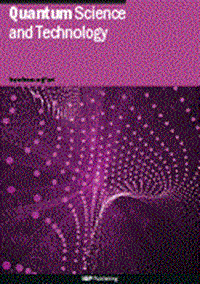QSSS-LTE: quantum secret sharing scheme over lattice-based threshold encryption
IF 5
2区 物理与天体物理
Q1 PHYSICS, MULTIDISCIPLINARY
引用次数: 0
Abstract
This paper proposed a quantum secret sharing scheme over lattice-based threshold encryption: it integrates resplittable threshold public key encryption (RTPKE) and utilizes a lattice-based private key share transmission mechanism to enhance the security of the share distribution process. By leveraging the dynamic key management features of RTPKE, the scheme can flexibly adjust key distribution as required when participants change. During the quantum secret reconstruction process, the decoy particles do not need to be detected by eavesdroppers when transmitted between participants. Instead, this task is performed by a semi-trusted third party (TP), reducing resource consumption and communication overhead. The decoy particles are not chosen from a fixed quantum bases but are instead in completely random quantum bases, making it impossible for an eavesdropper to obtain the correct result through conventional measurements. The probability of the eavesdropper escaping detection after measuring any decoy particle is nearly zero. After each participant performs a unitary operation, they randomly shuffle the sequence of decoy and information particles. When the particles are transmitted back to the TP, the TP uses the sequence information recorded by the participants to restore the original order and extract the information particles, effectively defending against forgery-replay attacks and potential threats from dishonest participants.QSSS-LTE:基于格子阈值加密的量子秘密共享方案
本文提出了一种基于栅格阈值加密的量子秘密共享方案:它集成了可重复阈值公钥加密(RTPKE),并利用基于栅格的私钥共享传输机制来增强共享分发过程的安全性。该方案利用RTPKE的动态密钥管理特性,可以在参与者发生变化时灵活调整密钥分配。在量子秘密重建过程中,诱饵粒子在参与者之间传输时不需要被窃听者检测到。相反,此任务由半可信的第三方(TP)执行,从而减少了资源消耗和通信开销。诱饵粒子不是从固定的量子基中选择的,而是完全随机的量子基,这使得窃听者不可能通过常规测量获得正确的结果。在测量任何诱饵粒子后,窃听者逃脱检测的概率几乎为零。在每个参与者完成一个单一的操作后,他们随机洗牌诱饵和信息粒子的序列。当粒子被传输回TP时,TP利用参与者记录的序列信息恢复原始顺序,提取信息粒子,有效防御伪造重放攻击和不诚实参与者的潜在威胁。
本文章由计算机程序翻译,如有差异,请以英文原文为准。
求助全文
约1分钟内获得全文
求助全文
来源期刊

Quantum Science and Technology
Materials Science-Materials Science (miscellaneous)
CiteScore
11.20
自引率
3.00%
发文量
133
期刊介绍:
Driven by advances in technology and experimental capability, the last decade has seen the emergence of quantum technology: a new praxis for controlling the quantum world. It is now possible to engineer complex, multi-component systems that merge the once distinct fields of quantum optics and condensed matter physics.
Quantum Science and Technology is a new multidisciplinary, electronic-only journal, devoted to publishing research of the highest quality and impact covering theoretical and experimental advances in the fundamental science and application of all quantum-enabled technologies.
 求助内容:
求助内容: 应助结果提醒方式:
应助结果提醒方式:


